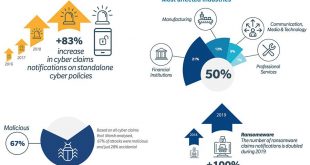Cyber warfare refers to the strategic use of technology to attack nations, governments, or individuals, causing disruption and damage comparable to traditional warfare. Over the years, it has evolved into a complex battleground where both state and non-state actors deploy sophisticated cyber weapons to compromise critical infrastructure such as power grids, telecommunications networks, financial systems, and industrial control systems.
The Cyber Kill Chain framework is a crucial model for understanding and disrupting the sequence of steps that attackers take during a cyberattack. By breaking down a cyberattack into clear stages, from reconnaissance to the execution of objectives, the Cyber Kill Chain equips security professionals with a strategic advantage. It allows them to detect and halt threats early, preventing attacks from escalating into major breaches. This structured approach to cybersecurity has evolved over the years and remains a powerful tool to predict, analyze, and defend against modern cyber threats.
A Brief History of the Cyber Kill Chain
The concept of the Cyber Kill Chain originated at Lockheed Martin, where researchers adapted military concepts for the digital domain. The original military kill chain was used to describe the process of detecting and neutralizing enemy threats in a physical battlefield. Lockheed Martin’s cybersecurity experts reimagined this model to address cyber warfare, a new kind of battleground that required different tactics and defenses.
Initially, the model was designed to have seven distinct phases, each representing a stage in the attacker’s lifecycle. Over time, the Cyber Kill Chain has expanded to include more steps, reflecting the dynamic nature of cyber threats and the growing complexity of attack strategies. The model’s flexibility allows it to remain relevant and effective in an ever-changing cyber landscape.
How the Cyber Kill Chain Works
The Cyber Kill Chain offers a structured framework that allows organizations to dissect cyberattacks into manageable stages. By analyzing these stages, cybersecurity teams can understand the progression of an attack, anticipate the attacker’s next move, and disrupt their plans at various points in the attack lifecycle.
As the Cyber Kill Chain continues to evolve, it is important to stay informed about the stages and use visual tools like cyber kill chain maps for better understanding. The core phases of a cyberattack, as per the updated model, include:
The Seven Phases of the Cyber Kill Chain
The Cyber Kill Chain framework consists of seven stages that provide a detailed roadmap for understanding how cyberattacks unfold. Each phase represents an opportunity for defenders to intervene and disrupt the attack before it reaches its final objectives.
1. Reconnaissance
The reconnaissance phase marks the beginning of the cyberattack lifecycle, where attackers gather information about their target. This stage may involve scanning the internet for exposed vulnerabilities or gathering intelligence on a specific organization. Attackers might look for information like employee emails, network configurations, or software vulnerabilities.
A real-world example of reconnaissance in action can be seen in the Target breach of 2013, where cybercriminals used information from a third-party vendor to launch a devastating supply chain attack. By understanding the vulnerabilities of a vendor system, attackers gained access to Target’s network and compromised millions of credit card details.
2. Weaponization
In the weaponization phase, attackers create a custom exploit to take advantage of the vulnerabilities discovered during reconnaissance. This could involve developing malicious software, such as a virus or a worm, or crafting a spear-phishing email with an embedded payload. The goal is to build a tool that can bypass security defenses and infiltrate the target’s systems.
3. Delivery
Delivery is the phase where the weaponized exploit is transmitted to the target. This can happen through various channels, such as email phishing, malicious attachments, infected websites, or even USB drives. The 2017 Equifax breach serves as a case study for this phase, where attackers used a web application vulnerability to deliver their exploit.
4. Exploitation
Once the weapon is delivered, attackers attempt to exploit the target’s vulnerabilities to gain access to their systems. Phishing emails are a common method used in this phase, as they leverage compromised credentials or trick users into clicking on malicious links. This stage is crucial for gaining a foothold in the target environment.
5. Installation
In the installation phase, the attacker installs malware or backdoors to maintain persistent access to the system. These tools can allow attackers to escalate privileges, gain further access, or establish covert channels for remote control. Once installed, the attacker has a foothold within the network, making it easier to move laterally and access additional systems.
6. Command and Control (C2)
Command and control is a critical stage where malware communicates with external servers to receive further instructions. This phase is essential for maintaining control over the infected systems. The Sands Casino attack of 2014 involved a C2 channel where attackers communicated with infected devices to execute their attack and steal sensitive data.
7. Actions on Objectives
The final phase of the Cyber Kill Chain is the execution of the attacker’s primary objectives. This could involve stealing sensitive data, disrupting services, deploying ransomware, or conducting espionage. At this stage, attackers have achieved their goal, and their actions can cause significant damage to the target.
Cyber Weapons and Cyber Kill Chain
Cyber weapons play a crucial role in the Cyber Kill Chain, as they are the tools or malware used by attackers to carry out each phase of the attack. In the initial stages, such as reconnaissance and weaponization, cyber weapons are designed to exploit vulnerabilities in the target system or infrastructure. These weapons can range from phishing emails and malware payloads to more advanced tools like ransomware or zero-day exploits.
As the attack progresses through the delivery, exploitation, and installation phases, the cyber weapon is delivered to the target, deployed, and used to establish control. Once the weapon has infiltrated the system, it facilitates command and control by creating backdoors or allowing remote access. In the final stage, actions on objectives, cyber weapons can be used to execute malicious actions such as data exfiltration, system disruption, or even destruction. The design, deployment, and sophistication of these cyber weapons are integral to the success of an attack, making them central to the Cyber Kill Chain’s overall framework. Understanding how these weapons function at each stage allows defenders to better predict and prevent attacks by detecting anomalies and neutralizing threats before they can achieve their objectives.
Identifying and Mitigating Attack Vulnerabilities
Understanding the Cyber Kill Chain is just the first step in building an effective defense strategy. Organizations need to focus on mitigating vulnerabilities at each stage of the attack lifecycle. Implementing measures like multi-factor authentication, network segmentation, and regular patching can help reduce the attack surface and stop threats in their tracks.
Additionally, tools like firewalls, intrusion detection systems (IDS), and endpoint protection can help detect early-stage attacks and prevent the exploitation of vulnerabilities. For example, the NotPetya attack in 2017, which was designed to exploit known vulnerabilities in the Windows operating system, could have been mitigated with proper patching and timely security updates.
Real-Life Use Cases for the Cyber Kill Chain
The effectiveness of the Cyber Kill Chain framework is evident in its application to real-world incidents. For example, a study conducted by Glorin Sebastian from the Georgia Institute of Technology used the Cyber Kill Chain model to analyze high-profile data breaches, such as the Yahoo breach of 2014 and the Equifax breach of 2017. By tracing each attack through the phases of the kill chain, researchers were able to identify key vulnerabilities and propose targeted defenses that could have mitigated the damage.
In the case of Yahoo, attackers used phishing to gain access to employee credentials, then exploited a vulnerability in Yahoo’s systems to install malware and steal sensitive data. By understanding the stages of the attack, security professionals could have detected and blocked the attack at multiple points in the kill chain, reducing the impact of the breach.
While the Cyber Kill Chain model originally focused on preventing external threats, its flexibility has enabled it to adapt to a wide range of evolving cyber threats. Today, the model addresses newer challenges such as insider attacks, advanced ransomware, and cyber espionage.
One of the significant advancements is the addition of the Monetization phase, which reflects the growing financial motivations behind cyberattacks. Cybercriminals are increasingly monetizing their attacks through methods like ransomware, data theft, and extortion. For example, the WannaCry ransomware attack in 2017, which infected hundreds of thousands of computers globally, was driven by financial gain, demonstrating how the attack lifecycle culminates in the monetization phase.
The advent of technologies like cloud computing and the Internet of Things (IoT) has also introduced new attack vectors. Attackers are now exploiting vulnerabilities in interconnected devices and cloud-based infrastructures, making traditional perimeter defenses less effective. In response, the Cyber Kill Chain has evolved to include new detection and mitigation strategies.
Beyond the Cyber Kill Chain: The Future of Cyber Defense
The Cyber Kill Chain, while powerful, is not a standalone solution. As the threat landscape evolves, cybersecurity frameworks must also adapt. One such evolution is the integration of the MITRE ATT&CK framework, which provides a more granular view of attacker techniques, tactics, and procedures (TTPs). By combining the Cyber Kill Chain with MITRE ATT&CK, organizations can gain deeper insights into how attackers operate and improve their defensive capabilities.
Emerging technologies like AI and machine learning are also enhancing the capabilities of cybersecurity teams. By leveraging machine learning algorithms, security systems can detect anomalies, predict potential threats, and automate responses in real time. These technologies are becoming an integral part of modern security operations, providing proactive threat detection and quicker response times.
Conclusion
The Cyber Kill Chain framework remains one of the most powerful tools in the cybersecurity arsenal. By understanding the various stages of a cyberattack, organizations can predict the attacker’s next move and intervene at critical points to prevent breaches. However, as cyber threats continue to evolve, so too must our defense strategies. By integrating advanced tools like AI, leveraging frameworks such as MITRE ATT&CK, and adopting proactive defense measures, organizations can stay one step ahead in the ever-changing world of cyber warfare.
References and Resources also include:
https://www.recordedfuture.com/threat-intelligence-101/threat-analysis/cyber-kill-chain
 International Defense Security & Technology Your trusted Source for News, Research and Analysis
International Defense Security & Technology Your trusted Source for News, Research and Analysis

